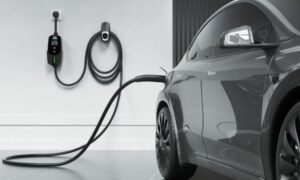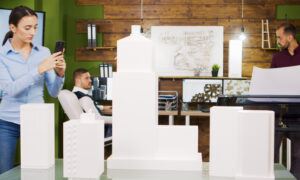When shopping for a vehicle, many buyers focus on price, style, and mileage. However, one crucial factor that should never be overlooked is safety technology. Purchasing a car with modern safety features can significantly reduce the risk of accidents and injuries. This is especially important when buying from a used car dealership, where vehicles may vary widely in age and features. If you are considering buying from a used car dealership in Visalia, CA, understanding the role of safety technology can help you make an informed decision that protects both you and your passengers.
The Evolution of Car Safety Technology
Car safety technology has advanced rapidly over the past few decades. Earlier vehicles relied primarily on seat belts and airbags as the main forms of protection. Today, even used cars from recent years often come equipped with advanced systems such as lane departure warnings, automatic emergency braking, blind spot monitoring, and adaptive cruise control. Each of these features contributes to preventing accidents or reducing the severity of collisions. Understanding how these technologies work and their benefits can help buyers prioritize vehicles with the highest safety value.
Why Safety Technology Matters for Used Cars
While new cars are built with the latest safety standards, used cars may vary in the technology they offer. Older models might lack modern electronic aids, while newer used vehicles can provide almost the same protection as brand-new models. Investing in a used car with updated safety technology ensures you are not compromising your well-being for a lower price. Additionally, cars with advanced safety features may also have lower insurance premiums, adding financial benefits alongside enhanced protection.
Common Safety Features to Look For
When evaluating used cars, certain safety features are particularly important:
- Anti-lock Braking System (ABS): Prevents the wheels from locking up during sudden braking, maintaining steering control.
- Electronic Stability Control (ESC): Helps prevent skidding or losing control during sharp turns or slippery conditions.
- Airbags: Ensure the vehicle has front, side, and curtain airbags for comprehensive protection.
- Blind Spot Monitoring: Alerts the driver to vehicles in adjacent lanes that may not be visible.
- Lane Departure Warning and Lane Keeping Assist: Helps prevent unintentional drifting out of your lane.
- Automatic Emergency Braking (AEB): Detects potential collisions and applies brakes if the driver doesn’t react in time.
- Rearview Cameras: Improve visibility while reversing, reducing the risk of collisions with pedestrians or obstacles.
- Adaptive Cruise Control: Adjusts vehicle speed automatically to maintain a safe distance from the car ahead.
These features may be present in used cars from recent model years, so it is important to ask the dealership about specific safety technology before purchasing.
How to Verify Safety Features in a Used Car
When visiting a used car dealership, it is essential to confirm that the safety features advertised are functional. Start by reviewing the vehicle’s manual and window sticker, which should list all factory-installed safety technology. Next, ask the dealership to demonstrate each feature, such as testing the lane departure alert or rearview camera. Additionally, obtaining a vehicle history report can indicate whether any safety systems have been damaged or repaired after accidents. Ensuring these systems are operational is critical to maintaining the intended level of protection.
Safety Ratings and Their Importance
Another tool for assessing vehicle safety is the crash test ratings provided by the National Highway Traffic Safety Administration (NHTSA) and the Insurance Institute for Highway Safety (IIHS). These organizations conduct rigorous testing on new and recent used cars to determine crashworthiness and the effectiveness of safety features. When considering a used car, checking these ratings can provide valuable insight into the vehicle’s overall safety performance. Cars with high safety ratings and modern technology are more likely to protect occupants in a collision.
The Impact on Insurance and Resale Value
Cars equipped with advanced safety technology not only protect drivers and passengers but can also affect financial aspects such as insurance premiums and resale value. Insurance companies often offer discounts for vehicles with features like automatic emergency braking, lane-keeping assist, and adaptive cruise control. Furthermore, a well-maintained used car with modern safety systems is likely to retain its value better than older, less equipped models. This means that investing in a safer vehicle can provide long-term financial benefits as well as peace of mind.
Common Misconceptions About Used Car Safety
Many buyers assume that used cars are inherently less safe than new vehicles. While older vehicles may lack the newest technology, many used cars from the last five to ten years are equipped with comparable safety features. Another misconception is that low mileage guarantees safety, but the presence and condition of safety technology are more important than mileage alone. Buyers should focus on a car’s features, crash history, and maintenance records to ensure optimal protection.
Tips for Buying a Safe Used Car
- Research Before Visiting: Check safety ratings, reviews, and available features for the models you are considering.
- Ask About Safety Technology: Confirm which systems are installed and fully operational.
- Test Drive with Safety in Mind: Pay attention to braking, lane-keeping, blind-spot alerts, and adaptive systems.
- Check the Vehicle History: Look for previous accidents or repairs that may have impacted safety systems.
- Consider Insurance Implications: Verify potential discounts and insurance costs for vehicles with advanced safety features.
Following these tips can help ensure that your purchase prioritizes safety alongside price and performance.
The Role of Dealerships in Promoting Safe Vehicles
Reputable used car dealerships understand the importance of safety technology and often highlight these features in their inventory. Dealerships that focus on transparency and provide detailed information about safety systems help buyers make informed choices. Additionally, trustworthy dealers may offer inspection reports or certifications confirming that all safety features are fully functional.
Conclusion
Prioritizing car safety technology is essential when purchasing a used vehicle. Advanced systems like lane departure warnings, automatic emergency braking, and adaptive cruise control can prevent accidents and reduce the severity of collisions. Verifying these features, checking crash test ratings, and understanding their impact on insurance and resale value can help you make a smart investment. When buying from a trusted used car dealership, you can enjoy peace of mind knowing that your vehicle provides the protection you and your passengers deserve. By focusing on safety alongside price and performance, you can confidently choose a vehicle that safeguards both your life and your investment.































